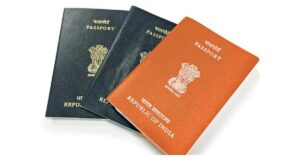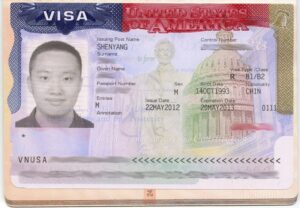In a world increasingly dominated by digital communication, the timeless act of sending a thank you card remains one of the most sincere and personal ways to express gratitude. A well-crafted thank you card goes beyond mere politeness—it becomes a tangible expression of appreciation that resonates with warmth and affection. Whether you’re thanking someone for a gift, a kind gesture, or simply their presence in your life, the perfect thank you card can leave a lasting impact. In this article, we’ll explore the art of crafting the perfect thank you card, from selecting the right materials to choosing the perfect words.
The Importance of Thank You Cards
In an age where a quick text or an email is the norm, a thank you card stands out as a meaningful gesture. It reflects the time, effort, and thought you’ve put into expressing your gratitude. A physical card has a personal touch that digital messages often lack, making the recipient feel valued and appreciated.
Thank you cards also serve as keepsakes. Unlike fleeting digital messages, they can be held, displayed, and revisited. This tangible aspect makes them particularly special, as they carry the sentiment and memory of the moment for years to come.
Choosing the Right Card
The foundation of a perfect thank you card lies in selecting the right card. There are countless options available, from store-bought designs to handmade creations. Here are some factors to consider when choosing the perfect card:
1. Occasion and Relationship
- Formal or Informal: The tone of the card should match the occasion and your relationship with the recipient. A formal thank you card is appropriate for business-related gratitude, while a more informal and playful design might be better suited for thanking a close friend or family member.
- Personalized Designs: Opt for personalized cards that reflect the recipient’s personality or the nature of the gift or gesture. A card featuring a design related to their interests can add an extra layer of thoughtfulness.
2. Design and Aesthetics
- Minimalist vs. Elaborate: Depending on your style and the message you want to convey, you can choose between minimalist designs that emphasize simplicity and elegance, or elaborate designs that are vibrant and detailed.
- Colors and Patterns: The color scheme of your card can significantly influence its tone. Soft, pastel colors evoke a gentle, heartfelt sentiment, while bold colors can express enthusiasm and joy. Consider the recipient’s preferences when selecting colors and patterns.
3. Quality of Materials
- Paper Quality: The tactile experience of a thank you card is just as important as its visual appeal. Choose cards made from high-quality paper that feels substantial and luxurious. Textured or embossed papers can add a touch of sophistication.
- Environmental Considerations: If sustainability is important to you or the recipient, consider cards made from recycled or eco-friendly materials. Many companies now offer beautiful, environmentally conscious options that don’t compromise on quality or aesthetics.
Writing the Perfect Message
The heart of a thank you card is its message. This is where you convey your gratitude in a way that is personal, sincere, and memorable. Here’s how to craft the perfect message:
1. Start with a Warm Greeting
- Address the Recipient by Name: Begin your message with a personal touch by addressing the recipient by name. This simple gesture immediately creates a connection and sets a warm tone.
- Opening Line: Start with a phrase that expresses your gratitude right away. Phrases like “Thank you so much,” “I’m deeply grateful for,” or “I truly appreciate” are effective ways to begin.
2. Be Specific About Your Gratitude
- Mention the Gift or Gesture: Instead of a generic thank you, mention the specific gift, act of kindness, or gesture you are thanking them for. This shows that you value their thoughtfulness and attention to detail.
- Express How It Affected You: Share how the gift or gesture made you feel or how it has positively impacted your life. For example, “The beautiful vase you gave me has added so much charm to my living room, and I think of you every time I see it.”
3. Share a Memory or Future Plans
- Relate to a Shared Experience: If the thank you is related to an event or experience you shared with the recipient, reference it in your message. This adds a personal touch and shows that you cherish the memories created together.
- Mention Future Interactions: If applicable, express your hope to see them soon or your excitement for future plans. For example, “I look forward to our next coffee catch-up!”
4. Close with Heartfelt Warmth
- End on a Sincere Note: Your closing should reflect the tone of your message and your relationship with the recipient. Phrases like “With heartfelt thanks,” “Warm regards,” or simply “With love” are appropriate depending on the context.
- Include a Signature: Don’t forget to sign your card, even if it’s pre-printed with your name. A handwritten signature adds a personal touch that reinforces the sincerity of your message.
Adding Extra Touches
While the message is the most important part of the card, adding a few extra touches can make your thank you card even more special.
1. Handwritten Elements
- Personalize the Card: Even if you’ve chosen a pre-printed card, add a few handwritten lines. This could be a personal note in the margins, a drawing, or simply a flourish around your signature.
- Incorporate Calligraphy: If you have the skill, consider writing your message in calligraphy or a decorative script. This can elevate the visual appeal of your card and make it feel even more unique.
2. Include a Small Gift
- A Token of Appreciation: Consider including a small token of appreciation with your card, such as a pressed flower, a bookmark, or a small photo. These little additions can make your thank you card a cherished keepsake.
- Gift Cards: For a more substantial gesture, you can include a gift card to their favorite store or a place you think they’d enjoy.
3. Use Wax Seals or Embellishments
- Wax Seals: Adding a wax seal to your envelope can give your thank you card an old-world charm and make the recipient feel like they’re receiving something truly special.
- Ribbons and Stickers: Embellish your card or envelope with ribbons, stickers, or washi tape. These decorative elements can add a touch of fun or elegance, depending on the style you choose.
When to Send a Thank You Card
Timing is everything when it comes to digital thank you cards. Sending your card promptly shows that you are considerate and mindful of the effort the recipient made. However, even if some time has passed, a late thank you card is better than none at all.
1. Within a Week
- For Gifts and Gestures: Ideally, you should send a thank you card within a week of receiving a gift or experiencing a kind gesture. This keeps the sentiment fresh in both your mind and the recipient’s.
2. After a Major Event
- Weddings, Showers, or Large Parties: For significant events like weddings or large parties, you may have a lot of thank you cards to send. In such cases, sending them within two to three weeks is generally acceptable. Be sure to personalize each card, even if the message is similar.
3. Long Overdue Thanks
- It’s Never Too Late: If you’ve delayed sending a thank you card, don’t be discouraged. It’s always better to express your gratitude late than never. You can acknowledge the delay in your message and still convey your appreciation sincerely.
The Impact of a Thank You Card
A thank you card, when crafted with care and love, can have a profound impact. It strengthens relationships, nurtures bonds, and leaves a lasting impression. In a world where time is a precious commodity, taking the time to write and send a thank you card shows that you value the recipient and their actions.
Moreover, the act of writing a thank you card can be a gratifying experience for the sender as well. It allows you to reflect on the kindness you’ve received, fostering a sense of gratitude and positivity in your own life.
Conclusion
Crafting the perfect thank you card is an art that combines thoughtfulness, creativity, and sincerity. By selecting the right card, writing a heartfelt message, and adding personal touches, you can create a lasting expression of gratitude that will be cherished by the recipient. In a fast-paced world, a thank you card serves as a meaningful reminder that the simple act of saying “thank you” can be one of the most powerful ways to express love and appreciation.



